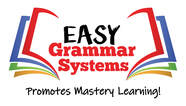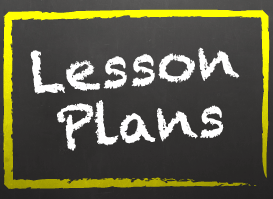Free: Sample Lesson PlanSample Lesson Plan by Dr. Wanda C. Phillips
Lesson Plans for Compound Subject and Auxiliary (Helping) Verbs Dr. Phillips: “Most students complete 2 or 3 lessons per day. I don’t provide detailed lesson plans for two reasons. I have written ‘To the Teacher’ pages to help you plan and to teach effectively. Also, I don’t want you to rush or to overwhelm your child. Pushing forward to complete a lesson plan when a child is tired, for example, is not a good idea. Our goal is mastery learning, not speed.” Here is a sample lesson plan for a day. You will be introducing compound subject and a list of helping verbs. You do not need to write your lesson plans. Important: By this lesson, the student will have learned prepositions, to identify and cross out a prepositional phrase, and how to determine subject and verb easily*. You will also have taught the concept of compound objects of the prepositions*. Activity 1 ~ Daily GRAMS: Goal: The student will review and use capitalization, punctuation, grammar, and other concepts. The last component is sentence combining for improved quality of writing. Plan of Action: The student will complete a Daily GRAMS lesson. This will require 5 minutes for the student and an additional 5 for you to discuss the lesson. (Then, close that book.) Note: Do each of the 180 lessons in order, one per day. Activity 2 ~ Easy Grammar: A. Teaching Compound Subject*: Goal: The student will use the process of deleting prepositional phrases in order to identify subject and verb. The child will learn to determine if the subject includes more than one (compound subject). Plan of Action: Use examples provided on the “To the Teacher” page to introduce the concept. Then, move to the lesson, guiding the student. This means asking the student to identify and delete any prepositional phrase and to determine subject and verb. Emphasize compound subject. You may want to complete each of 1-11 orally to make sure the student understands the concept. Then, have the student complete 12-15 alone. Correct after each sentence. B. Introducing Verb Phrases*: Goal: The student will be introduced to a list of 23 helping verbs. These are divided into categories for ease of learning. Plan of Action: The student will spend time learning the helping verbs. (I recommend setting them to the tune of “Jingle Bells.” Anytime you can add song and/or movement, learning is expedited.) This is an excellent time to use individual white boards. Ask the child to list the 3 helping verbs that begin with d. Allow the student to look at the master list; this is a learning process. You Have Completed the Lesson! At this point, you will make a decision. You may choose to end the lesson and move to another subject or to a writing lesson. If the student already has memorized his or her helping verbs, you may choose to do the worksheet for determining verb phrases. Your choice should depend on your student’s understanding, interest, etc. Remember that our goal is mastery, not speed! * In the Easy Grammar Plus text, “To the Teacher” instruction involving these concepts are on pages 12, 13, 17, 23, and 26, respectively. |
|
|

